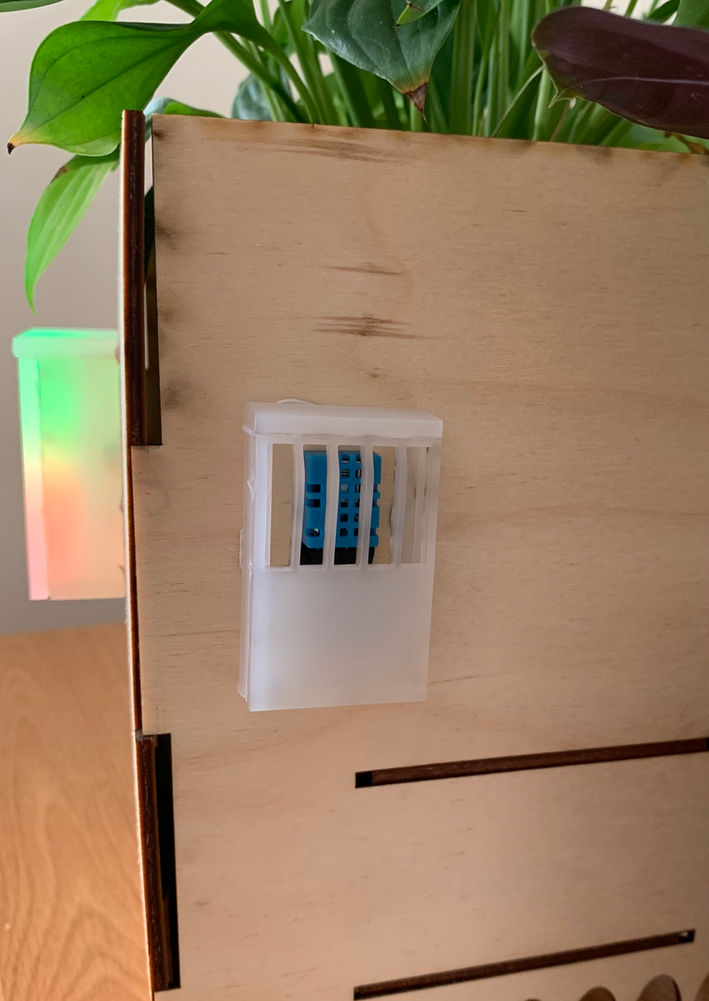MARTA GRABOWSKA
Smart Plant Pot
University Project
Physical Prototyping | Laser cutting | Concept Development | Illustrator | Micro:bit
Problem
Many individuals who are not plant experts or frequently away from home struggle to maintain healthy plants due to a lack of real-time information and automated care.
Solution
Smart plant pot that combines real-time data monitoring, automated care, and ambient awareness. The pot features a sensor to monitor humidity and temperature, providing users with information without the use of screens.
About
This project was a university assigment. I was required to produce a concept design for a new data-driven technology for the home.
Discovery
The initial focus was on addressing the cost of living crisis, which was identified as a timely and significant issue. However, considering the time pressure, it was difficult to design and develop a prototype, which would have a meaningful impact on the cost of living crisis, thus the direction changed. The concept shifted towards developing a smart plant pot that seamlessly integrates real-time data, humidity and temperature, while also considering the need to avoid adding another screen to the household. This shift in focus allowed for a more innovative and relevant solution to be developed.
Define
In the define phase, alternative ideas were explored to find a suitable solution for the smart plant pot. After considering various options, the concept of a smart plant pot leveraging ambient awareness to display temperature information and maintain a connection to nature emerged as the chosen direction.
Initial ideas

Develop
The development phase involved refining the initial design of the smart plant pot. To communicate the concept visually, sketches were created and a low-fidelity prototype was developed. To save time and enable a more hands-on approach, the pot's shape was adjusted from circular to rectangular, allowing for laser cutting instead of 3D printing, which would take over 24 hours. Adobe Illustrator was used to create the design used by the laser cutter.
The Micro:bit was programmed to collect real-time data on humidity and temperature within the plant pot. This coding process involved utilizing the DHT11 sensor to monitor the environmental conditions. The collected data was then used to display the appropriate colours on the Neopixel LED module.
The Neopixel was able to showcase the temperature and humidity conditions through ambient awareness. For instance, a blue colour would indicate that the humidity was too high and a red would signal that it was too hot. This visual feedback provided users with intuitive and easily understandable information about the environment inside the house.
Prototypes

Deliver
For the final delivery, wood was chosen as the material for the prototype to achieve a seamless integration between the plant and the pot, while avoiding an overly conspicuous appearance. The design was transformed into a high-fidelity wood model using a laser cutter. Throughout the project, I worked independently, taking full responsibility for meeting the design brief, generating ideas, developing prototypes, and building the final product. The experience not only enhanced my physical making skills but also expanded my skill set by incorporating functional technology, such as the Micro:bit, into the design.

Final prototype








